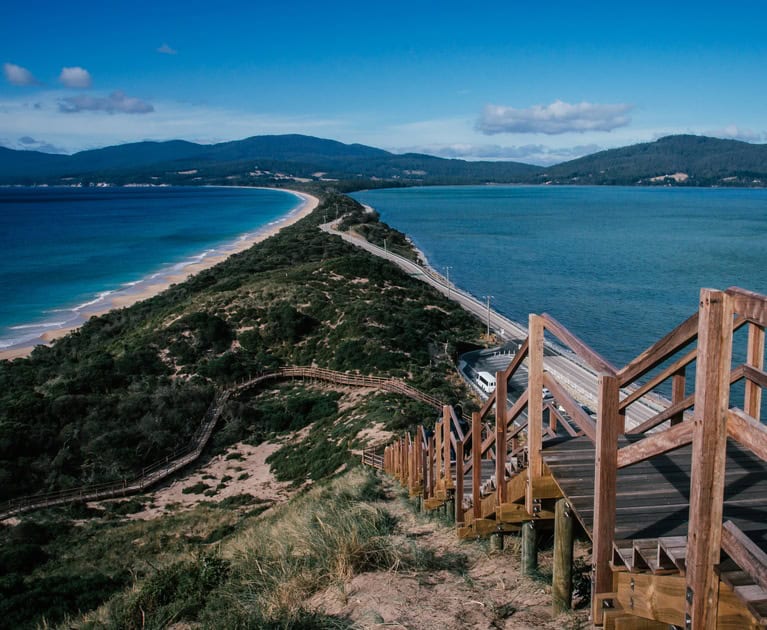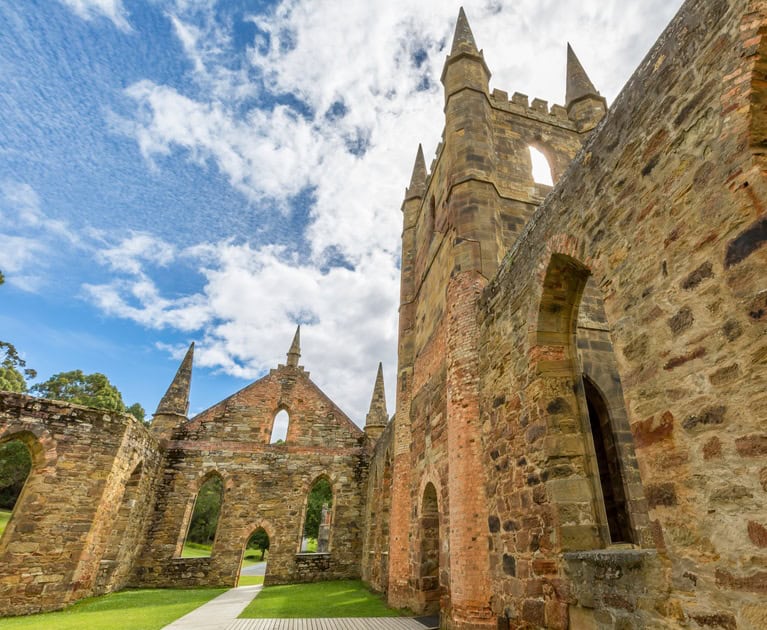



Having made your way to Hobart, you will be met by a representative of Aurora Expeditions and transferred to your group hotel. Upon arrival at your included hotel, please visit the Aurora Expeditions hospitality desk to collect your luggage cabin tags and to speak with the ground operations team, who may have information to share with you about pre-embarkation or to provide you with information about where to dine, withdraw cash or purchase last minute items from a local pharmacy or supermarket. The remainder of your time is at leisure. All meals today are at your own expense.
This morning, your luggage will be collected from the hotel and transferred directly to the port for sanitisation, clearance and delivered to your cabin ahead of your arrival on board. Please ensure that your luggage is fitted with cabin tags clearly labelled with your name and cabin number. Any valuables or personal items should be kept on you throughout the day. After breakfast, check-out and bring your luggage to the foyer. Please place any items required today in your hand luggage as your main bag will be placed in the bays of the coach. Enjoy an afternoon tour before returning to Hobart to board the Douglas Mawson in the late afternoon. Settle into your cabin before attending important safety briefings and enjoy the thrill of departure as you set sail. This evening, get to know your fellow expeditioners and the friendly Expedition Team and crew at the Welcome Dinner to celebrate the start of a thrilling adventure.
From the comfort of your floating base camp, make your first forays to the picturesque bays at South Bruny Island. Today you might light to enjoy picturesque coastal walks through flowering heathlands and eucalypt forests, a more leisurely stroll on long stretches of pristine sand, or a more active tramp up the headland for sweeping views of Cloudy Bay and beyond to the Southern Ranges. Later, as you sail southwards, keep an eye out on for views of Cape Bruny’s historic lighthouse. At the extreme south-eastern corner of Tasmania, the idyll of Recherche Bay offered French explorer, Bruni D’Entrecasteaux, refuge, replenishment, and scientific discovery. Learn more about his exploits, including the well-documented, amicable encounters and mutual observation between the expedition members and the indigenous Lylequonny people. Enjoy a hike towards the extreme southern tip of Tasmania or towards Fishers Point past the impressive bronze whale sculpture that commemorates the area’s early whaling history. Having rounded South East Cape, experience the untamed wilderness of the south coast.
From the comfort of the ‘mother ship’, enjoy a ship cruise at the Maatsuyker Island Group. Spy Australia’s most southerly lighthouse at Maatsuyker Island, and delight in the majesty of soaring shy albatross in the skies above Mewstone Island before setting sail up Tassie’s wild west coast.
Often described as a ‘coastal wonderland’, the impressive sea-cliffs, pristine beaches and sand dunes, sheltered lagoons and tidal inlets of the remote Hunter Island group provide an exciting backdrop to your adventures. The islands were named after John Hunter (Governor of the Colony of New South Wales) by Flinders on the first recorded circumnavigation of Tasmania in 1798; although the islands show evidence of over 23,000 years of continuous occupation by local Aboriginal people. The islands are a major breeding ground for a range of birds, including a number of threatened species, including the orange-bellied and swift parrots, white-bellied sea eagle, shy albatross, Tasmanian wedge-tailed eagle and fairy prion.
Marvel at the mystique of the far-flung Kent Islands – often missed on conventional maps – and experience its rich natural and human history. This cluster of three main islands and four smaller islets comprise Tassie’s northernmost national park. Discover the bountiful, nutrient-rich waters created by the convergence of three major ocean currents, which help feed Australia’s largest fur seal colony. Scan the shorelines and skies for sooty oystercatchers, short-tailed shearwaters, petrels and prions; contemplate the looming granite lighthouse; and discover stories of sealers, sailors and shipwrecks in the original lightkeeper’s cottage (the oldest in Australia, and now museum) run by the islands’ only two inhabitants.
Flinders Island – called Great Island until it was renamed in the early 1800s after explorer Matthew Flinders – is the largest of Tasmania’s islands and home to Strzelecki National Park. The island offers sapphire waters, untouched beaches, a rich variety of flora and fauna, rocky ridges and towering peaks as a backdrop to your hiking, or kayaking. Energetic hikers may like to scale the granitic beauties of the Strzelecki Peaks to experience spectacular vistas, while strollers might enjoy a shorter meander through shaded casuarina woodlands and coastal heath to secluded bays.
The striking scenery of Freycinet Peninsula tempts you for another day of discovery, whether you hike its towering pink granite peaks for a spectacular view, paddle its iridescent-blue waters, or beachcomb a pristine white beach peppered with orange lichen-covered boulders. The surrounding wilderness is also alive with flora and fauna. On your adventures, keep an eye out for white-breasted sea eagles soaring in the skies above, Bennett’s wallabies lazing under a she-oak, the local pod of bottle-nose dolphins, or perhaps one of the short-beaked echidnas that are sometimes seen foraging for ants in daylight hours. Weather permitting, you may also visit the nearby Schouten Island group, where gangs of fur seals can be seen vying for their favourite rocky resting place.
Known as Tasmania’s ‘Noah’s Ark’, Maria Island is home to an abundance of native wildlife including Bennett’s wallabies, common wombats, and rufous-bellied pademelons; as well as conservation sanctuary to a number of introduced species including the Tasmanian devil. The island is also considered one of the best places for bird watching, with a variety that includes all but one of Tassie’s endemic bird species. In addition to its natural history, the island has a rich human history stretching back over 40,000 years. The Puthikwilayti people of the Oyster Bay tribe were original custodians of the land and surrounding waters, which was later visited by European explorers, and exploited by sealers and whalers. Convict settlements, failed commercial ventures, and an eventual National Park designation are also part of the island’s antiquities.
Nestled amid English oaks and gardens, Port Arthur stands in stark contrast to the beauty of the Tasman Peninsula. Once a site of punishment, opportunity, and leisure, it now preserves Australia’s colonial history in stone and brick. Explore the ruins and restored buildings of the Port Arthur Historic Site. Back on board and as you set sail for Hobart, toast your adventures and celebrate with friends – both new and old – at the Captain’s Farewell Dinner.
In Hobart, farewell the crew, Expedition Team and fellow travellers before your transfer to the airport.
Find a personal travel manager to make an enquiry
Advertised prices are per person twin share, correct at time of publication and are subject to availability and change and can be withdrawn or amended at any time without notification due to fluctuations in charges, taxes and currency. Offer is only valid on new bookings and on select voyages only which must be booked and deposited between 28 January and 31 March 2025, unless sold out prior. Promotion is subject to availability at the time of booking and capacity controlled. Offers can be withdrawn at any time and are not redeemable for cash. Not combinable with other offers. Advertised from price is inclusive of percentage discount. This offer is not combinable with any other discounts (except Loyalty offer). Promotion is subject to availability, not redeemable for cash and can be withdrawn at any time. #Shipboard credit of US$100 per person twin share in US dollars and is applicable for bookings deposited by 31 March 2025 and quoting promo code TM100. The promotion is not transferrable or redeemable for cash. Gratuities are on a discretionary basis – they will be added to your account at the end of each voyage at a rate of US $15 per person per day, however, you will have the ability to ‘opt out’ should you choose to. Normal booking terms and conditions apply. To confirm your booking, a completed booking form and non-refundable deposit of $2,500 pp in the booking currency is required within 7 days of reserved berth/s. Additional terms and conditions may apply. Your personal travel manager may charge additional service fees. Other conditions apply. Please view the TravelManagers general terms and conditions here and contact your personal travel manager for more details.